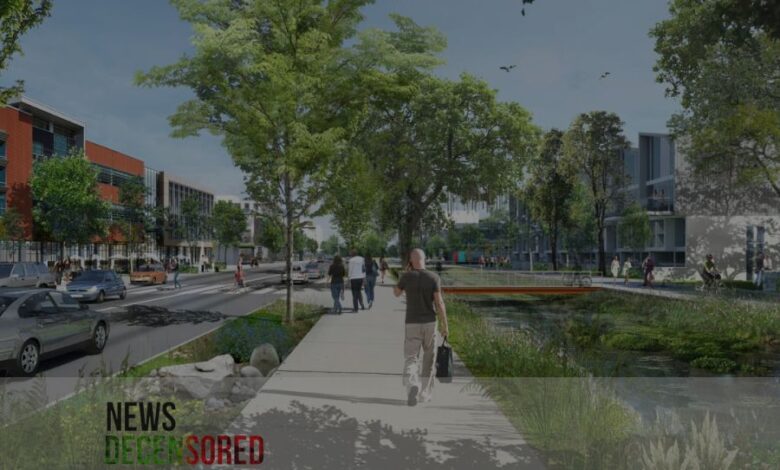Cities Getting Hotter? Retroreflectors Might Offer a Cool Solution

As summers become more intense, especially in urban areas where towering buildings, concrete, and asphalt trap heat, a surprisingly simple and potentially affordable strategy might offer relief: retroreflective materials.
A recent study published in Nature Cities revealed that applying these materials to buildings resulted in a significant temperature drop. The research found that surface temperatures on treated buildings decreased by up to 36 degrees Fahrenheit, and air temperatures in their vicinity dipped by nearly 5 degrees.
“Lowering building temperatures is crucial for people walking on the streets,” explained Elie Bou-Zeid, co-author of the study and a professor of civil and environmental engineering at Princeton University. “These hot walls directly radiate heat onto pedestrians.”
He elaborated, “A 36-degree reduction in surface temperature makes a noticeable difference in comfort levels. It’s almost like being in the shade.”
Cities are notoriously hotter than surrounding areas due to their built environment. Skyscrapers, dark roofs, asphalt, and concrete absorb sunlight and release it back as heat, creating a phenomenon known as the urban heat island effect. Urban planners have been exploring various solutions to combat this heat buildup, including painting roads white, increasing tree cover, and implementing green roofs. However, research suggests that retroreflective materials could provide a more substantial cooling effect.
The concept behind retroreflectors is quite straightforward. These materials employ a combination of three mirrors arranged in a specific corner configuration or a single bowl-shaped mirror to reflect light directly back to its source. We encounter retroreflectors in everyday life – in road signs and bicycle reflectors, which return light to drivers’ eyes, and even in the reflective strips on running clothes. Interestingly, cats’ eyes possess a similar natural adaptation, explaining their characteristic glow when illuminated by light.
Elie Bou-Zeid, co-author of the study, envisions retroreflective materials as sheets or coatings applicable to various city surfaces. Since the material itself is cost-effective, it could be a budget-friendly solution to the growing threat of extreme heat, fueled by rising global temperatures.
Limited trials of this concept have already been conducted in the Netherlands and Italy. However, large-scale implementation remains a challenge due to the difficulty of retrofitting existing buildings. “The building industry, as a whole, is somewhat hesitant to embrace new technologies,” Bou-Zeid told CNN. “Our hope, at least with this paper, is to demonstrate the significant cooling potential of retroreflective materials. The next step would be to adapt this existing technology for building applications.”
Some US cities, like Los Angeles, have experimented with combating extreme heat by painting roads with a grayish-white coating designed to reflect sunlight and lower air temperatures – similar to how a light shirt keeps you cooler on a hot day. Researchers, however, believe this method is less effective than retroreflective materials, which, as Bou-Zeid explains, “reflect sunlight towards the sun, not onto other ground objects.”
There’s a potential drawback, though: retroreflective materials could exacerbate winter coldness by reflecting sunlight at a time when it’s beneficial. This raises concerns about new public health issues. Bou-Zeid suggests the possibility of developing “switchable” reflective materials.
“During scorching summers, they’d turn white, reflecting a significant amount of sunlight back to the sky,” Bou-Zeid explains. “Conversely, in the frigid winter months, they’d become black, absorbing most of the sun’s energy and minimizing reflection.”
Xinjie Huang, the study’s lead author and a doctoral researcher at Princeton, emphasizes the importance of cities implementing various measures to adapt to and mitigate the urban impacts of climate change.



